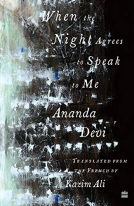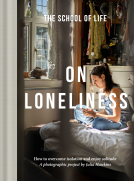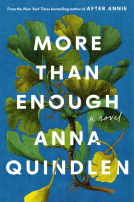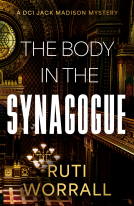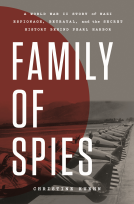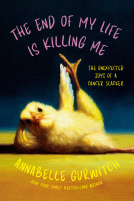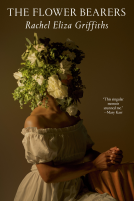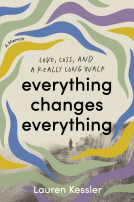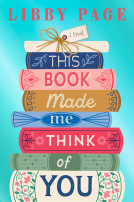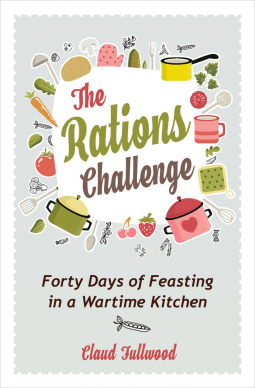
The Rations Challenge
Forty Days of Feasting in a Wartime Kitchen
by Claud Fullwood
This title was previously available on NetGalley and is now archived.
Send NetGalley books directly to your Kindle or Kindle app
1
To read on a Kindle or Kindle app, please add kindle@netgalley.com as an approved email address to receive files in your Amazon account. Click here for step-by-step instructions.
2
Also find your Kindle email address within your Amazon account, and enter it here.
Pub Date Nov 22 2019 | Archive Date Sep 03 2020
Lion Hudson Ltd | Lion Books
Talking about this book? Use #TheRationsChallenge #NetGalley. More hashtag tips!
Description
Food is always a hot topic - Food waste, food banks, food miles, local versus imported. As we all need food, we can't ignore it.
But as some families struggle without enough food to live on, others are challenged to consider how much they throw away, or how to make the food they have go further.
Which is why Claud Fullwood set herself the challenge of living on World War Two rations for Lent. It opened her eyes not only to issues of hunger and waste, but also to the many ways in which we have the power to fix our groaning food system, make our families stronger and our communities whole again.
The Rations Challenge takes the wisdom of World War Two and looks at how it can help us revolutionise how we live now. By learning the lessons our parents and grandparents lived by in the '30s and '40s, we can build a future that works for everyone.
Advance Praise
'My Nan would really smile at this book. It would all feel so familiar to her - making do, using everything she had, wasting nothing, sharing with the neighbours, growing vegetables all year round in the garden.' - Pam Rhodes, author and TV presenter
'This book couldn't come at a more relevant time. Claud Fullwood mixes together recipes, interviews, facts and personal experience into a delicious treat of a book: one which is light but substantial, and good for you too!' - Sarah Hagger-Holt, author, parent-of-two and former campaigns manager at Catholic aid agency CAFOD
Available Editions
| EDITION | Other Format |
| ISBN | 9780745980775 |
| PRICE | $18.99 (USD) |
| PAGES | 160 |
Average rating from 45 members
Featured Reviews
 Educator 557441
Educator 557441
I downloaded this book with interest as of course, Boris Johnson has just introduced a GB lockdown and people have been stockpiling and panic buying due to COVID19.
This book is well presented, giving historic background to rationing during WW2 , and compares food standards and tastes from then to now. There are spaces to make your own notes. It should be viewed as a working document. Reference is also make to UN global goals which is a great touch.
There are war time recipes using meagre ingredients. Incidentally I made fat-free barm brack (fruit bread) yesterday which was lovely, and that recipe was in the book.
All in all, this is an interesting read with some decent recipes.
Thanks to netGalley for the opportunity to read this ahead of publication in exchange for an honest review
 jeanie m, Reviewer
jeanie m, Reviewer
With thanks to netgalley for an early copy in return for an honest review
What a super book full.of wonderful stories and recipes and so apt for the present day. I will definitely be trying out a good few of these gorgeous recipes thank you
Very informative and clever, I am a fan of world war two books and the rations that they had to survive on is often mentioned. Imagine a life where a digestive biscuit is a rare treat. I often wondered how they managed and what they were able to cook with what they had.
So if you're interested in learning about rations and how it felt to survive on them then this is the book for you.
 Celeste L, Reviewer
Celeste L, Reviewer
I really enjoyed this book, although I really wish that it was in actual book format, rather than on my kindle. This book is designed like a workbook with interactive activities and recipes to follow along with. I really enjoyed this look back into what rationing was like during wars and how it all worked. The recipes will be fun to recreate and, I just really enjoyed this book. The author approached writing it with a true sense of humility and it was a joy to read!
 Abby S, Reviewer
Abby S, Reviewer
Really enjoyed this book.A diet of Rationed food from Ww2 the author decides to live on this diet for lent.The author who has always eaten lived the way she wanted decides to go back in time and live off this restrictive diet,She shares what she eats recipes included there are lovely stories anecdotes.Thisvis a charming entertaining book fun following the authors diet.#netgalley#legend press
 Librarian 65579
Librarian 65579
An interesting and timely book! The author could not have known how the world would be so soon after publication. While our current Covid 19 situation is not a war, there are many similarities with food shortages being one. Many of us are finding it hard to buy enough food, or having to make do with storecupboard staples, and this book is a great inspiration, in addition to the history aspect.
Many thanks to the publisher for a review copy.
 Morris M, Reviewer
Morris M, Reviewer
This is a quick read that focuses on the author challenging herself to use food more mindfully and gratefully during Lent through the limitations of wartime rations. It was thoughtful and well-written, though I would have preferred more recipes and tips to accompany the text. It definitely hits close to home in these uncertain times.
This review is being written during the time of COVID19. That's important to know, because a lot of us - myself included - are at least starting to think about food and access and availability and even sacrifice in different, more real ways. The other day, a cooking school I've attended frequently in the past was offering a free online class on making soft pretzels. As the chef was setting out ingredients, people were commenting - and more than half of the comments were about substitutions. Market shelves were bare in their neighborhoods, and everyday ingredients like flour and yeast were unavailable.
Which gets me to Claud Fullwoods delightful book, The Rations Challenge.
In 2018, British-based writer and blogger, Calud Fullwoods decided to follow a diet - and in many ways simply way of thinking - put forth by the British government during WWII, and based on common wartime rationing. That experience is the basis of The Rations Challenge.
Divided into six weeks, each chapter includes a bit of Fullwood's extended diary kept during her experience, a bit of history to put everything into a proper WWII context, suggestions for self reflection, some suggestions and some thoughtful and practical calls to action.
Her insights are, at times, both stunning and beautifully simple:
"I don't want to stop buying avocados, and oranges, and bananas...But I want to see those extra luxuries for what they are; gifts and privileges..."
But, Fullwoods goes further, bringing home the reality of WWI rationing by sharing the stories and experiences of people who lived through it - not as a lifestyle choice, but out of necessity. This section, too, provides amazing insight and humanity. And it can absolutely inform our response to and activities during the current global pandemic. These are lessons of resilience and community, of resourcefulness and commitment.
We can all benefit from those lessons:
"[The Ministry of Food} understood that for everyone to stay healthy, everyone had to have a fair share. As such, the very wealthy had to get used to eating old their share, so that the very poor could keep going. Put another way, the rich had to live more simply, so the poor could simply live."
Think about that when you're hoarding toilet paper and hand sanitizer.
The next section of the book is dedicated to British wartime recipes and kitchen tips. I admit I haven't tried any of the recipes prior to writing this review - something I would do if this were a cookbook. But I'm curious enough about several to try them, if not exactly move them into my menu rotation.
And finally, Fullwood finishes out the book with a comprehensive list of seasonal foods. Sadly, they are seasonal in the UK not here in the US, but a quick google search brought up a number of similar lists for here in America.
I have to say, I devoured this book. Like I read the entire thing in an hour.
And, within the next hour, I'd committed to put into practice many of Fullwoods' ideas and suggestions. No, I won't be hand-drawing ration cards to keep my husband and I in austerity, but we've already talked about starting a small garden and limiting the food we eat to what is grown locally, to becoming more aware of food waste in our home, to recognizing the privileged of choosing to make do and mend, rather than having it forced on us by our circumstances
The Rations Challenge is an incredibly timely, thought-provoking and charming book, and one I will be turning to often in the coming weeks, months and years as we all create our own post-pandemic world. Pick up a copy.
 Librarian 431790
Librarian 431790
An engrossing and useful book, full of great stories and interesting recipes.
It's an excellent read for this bleak times and can useful. I will surely try some of the recipes.
Highly recommended.
Many thanks to the publisher and Netgalley for this ARC, all opinions are mine.
A decent introduction to wartime cooking, from the perspective of someone who has gone back in time to experience rationing with a contemporary view. The values of buying local that are important to some people today were vital to the survival of people during the war, although in modern times, it's about feelgood, reducing food miles than doing your part for the home front, it still has importance.
This book has a collection of childhood experiences, for people who had memories of rationing as well as a diary account of the author eating rather a lot of fried mashed potato. Further reading on this topic can be found at the IWM as well as experimental archaeologists Ruth Goodman et al. on their book Wartime Farm.
 Media/Journalist 16509
Media/Journalist 16509
I love the premise of this British book (the author challenged herself to live on wartime rations during the 40 days of lent) but it wasn't that helpful or interesting to me personally. It turns out I already cook for my family very similarly to wartime rations with a few exceptions. We eat from scratch meals that are gluten free and generally vegetarian and organic. We forage and grow a lot of our foods and put them up (canning, freezing and drying), so I have an extensive pantry to work with at any time. For the most part, the foods that would have been limited are already ones we limit. We do use quite a lot of eggs since we buy them from a lady we know who keeps chickens (even during the pandemic, my husband made the drive to her country house and picked up 10 dozen cartons she'd left outside for him last week, leaving the $20 for her by the door). Since we live on a very tight budget and buy organic, I am used to stretching foods to make tasty, healthy meals.
I was hoping for more recipes and fun ideas, but hers were the basics that will be helpful for folks who are new to this kind of thing and not so helpful for me (think how to make homemade jam with just raspberries and sugar, uses for potatoes, etc.).
The book is black and white, and cheerfully illustrated with 1940's era drawings, a few charts, and a very few photos. There is a small section of memories from people who lived through rationing, and there are lots of notes on things like gender equality, food waste, and important issues that relate to food even though it's not always apparent. It is broken down by weeks with her diary at the start of each week and then little essays on various topics. The end section has some recipes and also some fun little touches like seasonal items to look for on nature walks, ideas for seasonal feasts, and so on. There is a lot of focus on making the most of foods, stretching meats, and so forth.
All in all, this is an interesting and fun little book. I would have probably really enjoyed it when I was young and newly married (either time, LOL), teaching myself to cook and preserve. While it wasn't a particularly good fit for me, I do recommend it.
I read a temporary digital ARC of this book for the purpose of review.
The author of this book, Claud Fullwood was bored with the usual things they gave up for lent and decided to try living on war time rations for the duration of lent instead. The book lists what the actual war time rations were per adult and per child. I think it would have been even more interesting if it had been a family living on war time rations for the time of lent, as we would have got different generations thoughts on the restrictions as well as the old recipes.
It was interesting to read about the different recipes and I can see where some of them had been handed down from my grandparents to my mum and even down to me. Such as stew & dumplings all in one big pot and literally throwing in whatever you have in the fridge or cupboard. I can remember my mum doing stew and my dad eating the leftovers the next day, saying that stew always tastes even better on the second day! Some recipes that originated back in that era have also been adapted as they have travelled down the generations, for example I remember my mum doing rabbit stew, or putting pig’s kidney in it. Whereas not being a big meat eater I have adapted this and do a vegetable stew.
I really enjoyed the discussion within the book of buying and cooking in season produce, which I am trying to do more of myself. I do always try to buy British, local and in season. With all the talk of climate change if we all bought and cooked in season produce it would reduce the carbon footprint a lot. I have also tried something else Claud did with the “grow your own” unfortunately due to medical issues it became more and more difficult and I had to stop. I do remember my grandparents keeping chickens in their back garden when I was very young. I remember collecting the still warm eggs they laid and choosing which one I would be having!
The second world war era is one I do find fascinating, from the stories of those fighting, and resisting oppression to the women taking on “men’s jobs” and the land army. The role of the housewife had not really been high on my list as to read about during this period of history. Having said that I have always been curious about how people managed on such restricted supplies. It also makes you think how society would cope in the present day with war time style rations. How did/would dietary requirements affect the people and rations. I guess there would be no “I don’t like this or that”. It would be put on the plate and on the table in front of you and you would eat it or do without. I also thoroughly enjoyed the sections where Claud added the stories of those that lived, and worked in this era too.
Will I take anything in particular from the book? Yes, I am definitely going to try harder to buy, cook and eat in season produce, as well as continuing to reduce waste too. I think there is also the aspect of appreciating how much different food we have available and the you don’t know how much you eat/use something until there is a shortage of it.
I would like to think that I can have the “rations challenge” attitude to baking/cooking now. That if I don’t have exactly what a recipe calls for I won’t straight away rush out to the shop to buy that specific missing ingredient, but I will look and see if I have anything similar that I could add and use as an alternative first.
My immediate thoughts upon finishing the book were that we were in an eerily similar situation now with food shortages, although it is being blamed on people buying much more than they need.
To sum up I did enjoy the book, but I can’t help thinking it would have been an even better read as a physical book, so you could flick back and forth easier between rations and recipes. The author also refers to “space” left in the book for you to write in. I think the interactive parts and following recipes would have been so much more fun, had they been more visual too as in an actual book rather than an ebook. I think pictures would enrich the experience of this book even more too.
The current situation in the world and the “panic buying” due to the Covid-19 virus it certainly brings home the necessity of certain food/grocery items and you learn what the “luxury” items are. It certainly makes you understand why rationing had to be brought in during the war so that everybody received their fair share. Though during the war there was the black market for extra items for those that had the money to purchase them. I suppose there is our own version of the black market with those that have bought and hoarded and have tried to sell on at a profit. Taking advantage of the ones who bought sensibly and thought of others.
 Susie F, Reviewer
Susie F, Reviewer
I loved this book, I chose it because it was seeming very apt at the current pandemic we are having. It’s an interesting read, with lots of facts and statistics. I thought I learnt loads from this about how people used to live. I’m a big fan of using what you can, I hate waste – especially food waste, so this book really spoke to me.
Thank you NetGalley for my complimentary copy in return for my honest review.
 Helen J, Reviewer
Helen J, Reviewer
This is Claud’s account of following a wartime rationed diet for Lent.
I downloaded this book from netgalley with extra interest as the country had just been put into lockdown due to the Coronavirus and it seemed like half the population had gone mad and cleared out all essential groceries from the supermarket shelves.
It was a good introduction to rationing in World War II although not quite as thorough as it could have been, and parts of it did read like a school text book.
Having said that, the recipe section really reminded me of reading my Granny’s recipe book which was very nostalgic.
I felt the small section of other people’s accounts of rationing was a bit perfunctory and better done in other books, and I think, on the whole, I would have liked a little more of Claud’s actual food diary as this seemed the point of the book, with perhaps a reading list at the back for further information on other people’s wartime experiences.
The interactive element was lost somewhat when read on a Kindle so better as a physical book to make notes in, and easier to leaf through the recipes.
In my opinion this book would be more interesting to someone without any prior knowledge of the subject as it is pretty basic stuff, so middle grade to young adult readers would benefit more than adults, but it was a pleasing, easy read and I’m glad I chose it.
 Kennedy P, Librarian
Kennedy P, Librarian
I requested this book because of its discussion on making do with food. It’s inspirational as we all are trying to cook more without running to the grocery store every other day. I will try some of the recipes. I also enjoyed the social history of life during the war years.
 Audi N, Reviewer
Audi N, Reviewer
Claud Fullwood does what many would consider extreme in today's society, living off rations for 40 days. This book will, without a doubt, make you think about how your grandparents or their parents lived with weekly rations during the war.
 Barbara S, Reviewer
Barbara S, Reviewer
Well this was a timely read, especially now in 2020 with shortages of toilet paper, beans, meat, baby wipes in my local grocery store. This author is a British woman who put a twist on Lent and instead of giving up sweets for six weeks, my old stand by, lived by the WWII ration system for six weeks. In 1943 Britain was importing NONE of its food and EVERYTHING was rationed. Everything was saved, mended , reused.
The challenge was divided up into 6 weeks. You had to plan ahead, make do, eat seasonally. You got (to name a few things) 1 egg a month, 3 pints of milk and 1 lb of meat, 3 oz of cheese, 2 oz of butter, 2 oz of tea, 8 oz of sugar a week, oats and fish were not rationed. People ate a lot of potatoes. You got 16 points to spend on canned food. A can of fruit was 12 points. Meals were monotonous but nutritious. Everyone had an allotment for a vegetable garden. Dig for victory. Women canned and bottled fruits and vegetables. I learned a lot about the Land Girls (now I will watch the TV series), the Women's Initiative which is still active today like our Farm Co Ops are. People kept pigs, chickens and goats then and chickens are becoming popular again today. Family time was precious then and games were popular and as we spend time home with our loved ones during social distancing I know we have started putting large puzzles together. The author wrote one third of all food produced today is wasted which is a travesty with so many hungry people. One trend is buy ugly fruits and vegetables as grocery stores only sell perfect specimens. WWII saw no food waste. Another trend was rationing so everyone one could eat not just the wealthy but the poor too. The government had to get into the nutrition business so the nation would have healthy workers and fighters. We are all in this together!
This book not only talked about the rationing system, the author talked about buying seasonally, buying fair trade and the impact this could have. The author kept a diary of the six weeks eating the ration diet and ways it could be done. There were also recipes from the pamphlets given out at the time. This weekend I plan to try the soda bread and the black berry bread and butter pudding with custard sauce. There were also interviews of people who lived during that time. I wish there had been more of those. Also included in the book is a seasonal calendar and a list of references and books for further reading. All in all I found this to be a gem of a little book and one I will read again. Thank you to Netgalley and the publisher for allowing me to read this book in exchange for a review.
 Lesley N, Reviewer
Lesley N, Reviewer
This book documents an interesting experiment carried out by Claud Fullwood, with additional contemporary input from self sufficient people and also historic recollections of wartime food. It is a well known fact that the population were generally much healthier during the war due to a more equitable distribution of food. It was also generally the case that those living in the countryside fared better than town dwellers. However, I am sure that most people nowadays would baulk at the thought of using a lot of the wartime recipes included in the book. It is all very well if you live in the countryside or have a reasonable sized garden so that you can grow your own, but those who live in flats do not have that option.
I am all for reducing food miles and using seasonal foods but am not sure what percentage of the population would be happy to do this. Those who wouldn't are probably the same ones who prefer to take long-haul flights for exotic holidays rather than exploring their own country and immediate neighbours.
This book is around at an appropriate time and it will be interesting to see what lifestyle changes people make when the coronavirus situation is out of the way.
 Catalina S, Librarian
Catalina S, Librarian
For the right audience this is a lovely book(A MUST in physical form!!). It is a combination of a bit of a diary, suggestions, a few interesting facts and pages where one can scribble, take notes, write down ideas, recipes whatever. It's also lovely that while you are provided with a few suggestions, it gives a lot of space and freedom to do as you please, seen that probably there are countless ways to tackle this challenge.
For me it was just an ok read as I wasn't interested in the challenge per se, but I wanted to read about a particular example(which I guess I could have in her blog, but it seems to have disappeared. Or at least I couldn't find it!) or about example from the war era, and needless to say this book didn't provide any of the things I was looking for. Despite all that, I would buy it as a gift for a friend either interested in some of the things presented in the book(like shopping locally, using seasonal produce) or in need of a challenge.
 Kirsty C, Bookseller
Kirsty C, Bookseller
Really interesting ideas in here especially for current climate. I would love to see finished physical copy because I don’t think the eproof did it justice.
 Reviewer 543736
Reviewer 543736
This book could not have been better timed with the way things have turned out in today's world. Although it is based on WW2 it will be very useful now, with plenty of recipes with limited products that we have right now. There are stories from different people who lived through the war along with history and plenty of information. It is a pity that this book is not available in the shops right now so that everyone can benefit from it now. I am giving this 4 stars, but get a copy as soon as possible and gain plenty of information and help to survive these awful times.
An interesting read focussing on living off a rations diet reducing food waste through using food efficiently.
A really creative approach to Lent! Claud Fullwood's writing style is absolutely lovely, really fitting the beautiful cover for this book. I never knew potatoes were such a staple of a wartime diet - or that one could get sick of them, but I suppose after too many portions of 'fadge' (look it up) for breakfast, that might happen! I'd love to see more writing from Claud Fullwood, and she is also really good on her social commentary and reasons behind the challenge. This book deserves to do really well.
 Hayley S, Reviewer
Hayley S, Reviewer
I happily received an advanced copy of this book. It didn't have as much information on cooking cheaper meals and saving money as I had hoped. Her interviews with people who lived through the war was interesting and a nice addition to the book.
 Vidya T, Reviewer
Vidya T, Reviewer
My Thoughts
I loved this book. I picked it up because it seemed so apt for the times we are in, and found myself getting more out of the book than I expected. This book is a history lesson, a lesson in rationing (of course), a recipe collection, a memoir of sorts, a notebook to and a reflection of ourselves in today’s global situation.
The author decided to challenge herself to live on wartime rations for six weeks (for Lent). As I read the suggestions, I realized that we already follow many of those in our home. While I am unlikely to do the challenge itself, the book turned out to be a fount of inspiration and information for me.
The first few chapters take us through the author’s personal experience as she took on this challenge. Each of these chapters has one section for each day: diary entry for the week, a then and now section to put today in context with wartime, suggestions for self reflection, and further suggestions and tips for what we can do to as we buy, prepare and enjoy our food.
Another chapter includes personal accounts of people who lived through rationing during various times of their life, specifically WWs, and provides an insight into a life that is still true for so many around the world today. The reasons might be different, but the reality is the same. And help us react accordingly, and with reason.
The next two chapters include wartime recipes and useful tips, and a seasonal calendar. Note that this calendar applies to the UK, but we can always look for what is seasonal and local in our area.
The author’s personal insights are thoughtful, heart-warming, humorous and delightful. I also loved the inclusion of quotes and snippets of information, as well as tips that are sprinkled like mini-appetizers or those tiny desserts that will fill you up as you read them. References and further reading resources are also included, which are sure to be useful for the inspired and curious reader.
Last but not the least, the drawings and photographs (all in black and white) add to the charm of this book.
In Summary
From its introduction to the conclusion, The Rations Challenge is a very timely, beautifully inspirational and truly informative book. A must-read!
“… we are all in this together, and that we can help each other through. That is a beautiful thing.”
<a href="https://www.ladyinreadwrites.com/">Check my blog - LadyInReadWrites - for more reviews</a>
Disclaimer: Thank you to NetGalley and the publishers for the digital ARC of the book; these are my honest opinions after reading the book.
 Librarian 107287
Librarian 107287
I have realised since finishing the book that it has already been published. I feel a little disappointed and hope that the comments I am going to make were rectified in the hard copy. My kindle edition did not render correctly on the page and so some of the comments might be related to my machine.
I like the idea of living on war time rations for a period, but I probably would not stick to the regime for six weeks as the author did. I feel doing so would be easier in a family of four rather than one person by themselves. I also like the idea of treading on the earth gently and reading this as I have during lockdown this really does bring home the message. Before lockdown the item I thought I would miss most was probably tinned tomatioes if they were rationed. I still think this is the case and so I would find it hard to stick to the rations outlined in the book. The book did not address the difference in input to output with regard to meat versus vegetables and perhaps this is a gap. My parents grew up in the war and to this day they will always have some tinned food available, including spam which I must admit I have never enjoyed. The use of tinned food was not discussed much.
I enjoyed the stop and think passages. Much of what was suggested I do follow and to the best of my ability have passed on to my son. There is hope in the younger generation regarding healthy living and sustainability. I am not sure this book will speak to many that are not converted to the waste little, eat seasonal foods and care about food miles. It is more likely to appeal to those who already think about these issues and want a nudge to take further steps.
I did expect the sections on food during the war to be longer. I think there were regional differences between the food that was available. Fish is an important point. The author alleges that there was not much fish available but my family from the north west ate fish regularly. I could believe it would be rarer to find fish in the Midlands. Pork was not mentioned, ham and bacon were but to my knowledge pigs were often reared in town gardens. What we would call small holdings were not really discussed except in passing comments. This leads me to my largest criticism. Food like peppers, cranberries, squashes and pumpkins are discussed but these feel like modern local items to supplement a diet on rations with. Were they grown during the war in a family vegetable patch? The lists of seasonal food towards the end of the book were split into categories for some seasons and not others. (This might be a rendering on the page issue). It is an inconsistency. A further inconsistency occurred around the conversion of ounces into grammes. This was not consistent between recipes and was not consistent with what is the norm.
I also expected the book to have more social history about it. For instance, how many families grew their own food. a list of the food they grew, how many hours a week they spent producing the food for the table and some comment on how this differed across the country.
I was really keen to read this but somehow I did not find it was what I expected.
My grandmother, Nana Iris, lived through World War Two, in Newport, Wales. At 13, she left school to kept house for her father who, as a train driver, was frequently away and to care for her younger brother. I often tried to get her to speak of her time growing up, the food stamps and rationing but, unsurprisingly, wartime was not a favourite topic for her. As such, I have enjoyed finding out about life during that time at every opportunity. “The Rations Challenge” by Claud Fullwood would have appealed to me on these grounds alone but my desire to read it increased as the COVID-19 pandemic impacted the world’s food supply.
In South Africa, our current food shortages are less a production or sourcing problem and more of a logistical problem, much of our food is produced on shore. This is in sharp contrast to the situation Britain found itself in during the war. The book is full of interesting facts about food production in the 1940s such as 70% of food being sourced offshore. The impact of the attacks from enemy on the supply chain was huge! The rationing system was essential to keep the country fed. In my review of the rations, my downfall would have come in the lack of eggs, a laying chicken would have been essential to complement the rationed amount but the rest is reasonable and proved to be healthy and filling. It certainly takes planning, measuring and restraint to live off, there is no extravagance allowed. However, there is a great sense of achievement when one reaches the end of the week without exceeding the cheese ration, I can attest to that!
During our lockdown period, nine weeks so far, I have learnt to make four varieties of bread and they taste better than bought! I have learnt to appreciate a menu plan and working with what’s in the cupboard! And I have come to understand why Nana enjoyed butter AND jam on a scone – true luxury when butter is in short supply! The book shares numerous recipes, modernized for easy use, which were made with the ingredients available at the time. I look forward to making my own preserves in the next fruit season.
In addition to the fascinating historical perspective, Claud includes today’s biggest challenge, global warming. She unpacks the impact our food supply has on the environment and how to think globally to preserve nature and protect it’s people. I have looked at my labels afresh to check our sourcing and we are blessed to find the vast majority comes from our local farmers but it is worth being reminded to remain attentive to our impact on the world and cut back where we can.
Designed as a 40 day lent challenge, the book is in a diary format broken into days but I found it too interesting to put down so read it straight through. I will not be sustaining myself on potatoes (the English way through war) but will definitely be applying the principles of consideration, moderation and reduction of waste. There is much to be gained from reflecting on the past and it is particularly apt to be doing that at a time like this! I highly recommend it, it’s a five out of five on the enJOYment scale.
 Librarian 615579
Librarian 615579
I am always up for a challenge in the kitchen and this book provides a fascinating look at the historical challenges people faced in kitchens on the home front of WWII. Coming out of a time of limitations during this COVID-19 quarantine this challenge is perfect! It also brings forth the very real environmental problem of food waste. This is definitely a book worth checking out.
This British book shares the author's story of eating on WWII-era rations during Lent one year. She designs this as a guide for other people who would like to try the same experiment, and shares daily reflections, historical and current analyses about food waste, and various thought experiments. Later in the book, she shares some reminisces from people who were children or young adults during the war, and she concludes the book with a series of detailed recipes.
I thought this premise sounded interesting, and hoped that it would help me with my ongoing historical fiction project. My novel is set in the US, so some of the British-focused details and soundbites about current issues weren't helpful to me, but I am thankful for the help that I got from the recipe section and the guide about when certain foods are in season.
Overall, however, this book is a mixed bag. It's not historically detailed enough to fully satisfy someone like me, but the focus on contemporary issues is also surface-level. Although this book could be a good introduction for someone who has never thought about food waste, fair trade issues, or how to support healthy local and global food markets, it is very basic overall.
Also, regarding the forty day challenge, I wish that the author had shared in far more detail about her own cooking and eating practices during this time, instead of just making general suggestions for a reader. She shares fairly repetitive reflections about what she was thinking, and about what foods she missed, but I wish she had gone into far more specific detail about what eating WWII-era rations tangibly look liked.
This book is a decent introduction to healthy eating, to food waste consciousness, and to WWII rations history, but even though I would recommend it to anyone who is interested in those topics and just beginning to learn about them, it is somewhat unfocused and surface-level from the perspective of a reader who is already well-informed about these things.
 Mary H, Reviewer
Mary H, Reviewer
This made me think, which is what the author wanted. We are in the middle of a pandemic. So I was eager to investigate living on rations, because we are doing it now, to a lesser extent than was the case in wartime, but still doing it, with unexpected items, such as the famous toilet roll shortage. Hopefully that has been averted now? The author made the point that we are still well off, compared to other countries, and indeed have much more choice compared to the war years. Waste is something to be avoided, in these days of food banks, when many people do not have enough to live on.
I agree that we should avoid waste. I like the recipes, particularly the vegetarian ones.I have not got around to being self sufficient enough to grow my own veg, but who knows? I might get to that stage eventually.
All him all, a very enjoyable book, that made me want to go outside and reconnect with the Earth. I would recommend the book to anyone, who like me, has an interest in current affairs, as well as recipes. The philosophy is great too, in fact the whole book is wonderful.
 Eli W, Educator
Eli W, Educator
An interesting insight into the challenges of feeding yourself during rationing. Perhaps not exactly what I had expected from the title. Was expecting some recipes that I could try.
 Rebekka S, Reviewer
Rebekka S, Reviewer
A fun look at cooking during WWII in the UK, and what it would be like to follow the same rationing today.
I had hoped for more actual historical information, and while The Rations Challenge did give a brief introduction, it was really more about the author's modern day life and experience following the same rationing rules today. Many of the recipes used and given were modernized - unfortunately that did not include the canning recipe, which is actually unsafe to use unless you plan on storing in the fridge and eating within a month.
 Kim F, Reviewer
Kim F, Reviewer
I enjoy books around set around the war- especially the home based books. This was a book about challenging yourself to use war times rations for 40 days. You realise how hard this is when told how many points you need for certain foods. Found this an interesting read.
 Jen B, Reviewer
Jen B, Reviewer
This is an interesting idea for a book and will interest those who are keen to make their usual weekly shop stretch a little further and reduce their food waste. The book is written like a diary with some recipes so if you are looking for something with detail about rationing then this isn't the book for you. None the less it is an interesting take on budget shopping and food waste reduction.
I enjoyed this look at rationing and during this pandemic it's something my family has been doing a little more of.
I chose this because I hate wastage - we rarely throw any food away in our household - and I wanted to see how how well the author managed on the fairly basic rations that were available during World War II.
It's a very interesting read, and includes some recipes, as well as reflections from the author.
As a child of the 60s, I grew up seeing my Grandma storing packets of tea and sugar (vital supplies both!) and listening to tales of how my parents had never even seen a banana until after the end of the war.
As a slight digression - I read this during the early weeks of lockdown and was struck by the difference in attitudes of people during World War II and now. Then, rationing was introduced to make sure everyone got at least a basic diet, and people seemed to work together. Contrast that with the behaviour of some people during the weeks leading up to lockdown - stockpiling just for their own benefit, and causing shortages for all.
We take so much for granted now and this book gave me pause to reflect on that fact, and how we live - expecting to be able to access pretty much any foodstuff all year round, whatever the cost of actually getting that food to us.
This book is definitely food for thought...
My thanks to NetGalley and the publishers for an ARC. All opinions my own.
 Mary H, Educator
Mary H, Educator
This thoughtful, handsomely illustrated book, arriving as it has during the pandemic crisis, could not have been better timed: What might have seemed like a pleasant, informative experiment- living on Britain’s wartime rations for 40 days- became instructive for those of us suddenly reconsidering our relationship to food. With abrupt shortages, disrupted supply chains, restaurants closing or just hanging on by going to take out, and shopping restricted to necessary trips only, the example set by the plucky and resourceful Brits in the Second World War is one worth learning from.
The diary format works really well to give a personal sense to this slender, cheerful guide to a better approach to community-based living. By eating seasonally and locally, and above all, avoiding waste, we can live better. It was essential in wartime Britain, but it is ethically sound and vitally important in a time of climate crisis. Europe is well ahead of America in this respect, in both awareness and in frugal habits. The new lockdown enthusiasm for bread baking and canning would have been routine in wartime, and there are plenty of anecdotes and household tips, especially about the ubiquitous potato, the wartime starch that replaced wheat and was prepared in as many ways as cooks could dream up, using what they had and stretching it as far as possible. Cooking is, of course, important to this experiment, and there is a section devoted to wartime recipes, including the despised dried eggs. Gardening is explored as well: the pleasure of really fresh food and the satisfaction of growing your own even in a time of plenty This might serve as the foundation for a culinary history class, or as a Lenten practice, as the author chose as a means of how to “explore abstinence as a form of solidarity.” (7) Her warm and positive commentary knits the whole story together and is gracefully expressed throughout. The author good-naturedly details the challenges of the rations challenge while reflecting on family history and includes several oral histories of both pensioners who recall their childhoods in wartime, and others who have chosen lifestyles off the grid. These narratives are a highlight of the book and add much to its impact.
“But the benefit of the ration regime is that it really lets you get to grips with what’s essential and what’s a luxury.” (62) The spiritual dimension of the challenge is the main theme, mining a rich vein that considers the importance of fair trade, eliminating food deserts, and establishing relationships that foster community, looking out for those whose hunger might not be obvious. Sharing of resources is key, just as it was during wartime deprivation. The author notes that money saved encourages a sound relationship with our possessions: Enough is indeed good enough. Those hoping for a jolly little retro cookbook will probably be disappointed, but her earnest, sensible and practical attitude to life really does affirm “Keep Calm and Carry On.” Highly recommended.
 Robbie P, Reviewer
Robbie P, Reviewer
Claud Fullwood's book The Rations Challenge is a diary-style description of the author's attempt to survive solely on WWII rationed items for the entire Lenten season.
I was expecting a little different book than the one offered by the author. It was, however, an intriguing look at how rationing worked during the war and for the author today. The book seemed to me to be more of a treatise on how we can change in the face of present concerns, such as climate change. I was hoping for more information on the history of rationing, as well as its economic consequences.
The book was interesting. It just wasn’t what I had expected or anticipated.
I received this book from NetGalley. However, my review is voluntary, and all opinions are my own.
Readers who liked this book also liked:
Annabelle Gurwitch
Biographies & Memoirs, Health, Mind & Body, Humor & Satire
